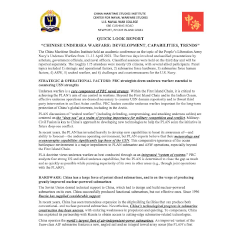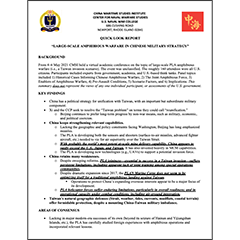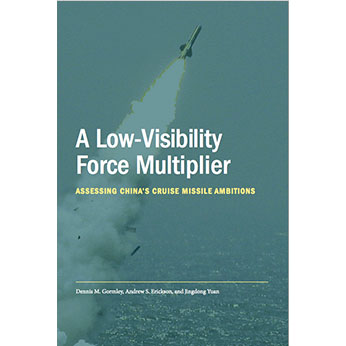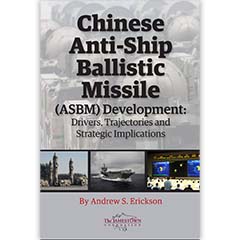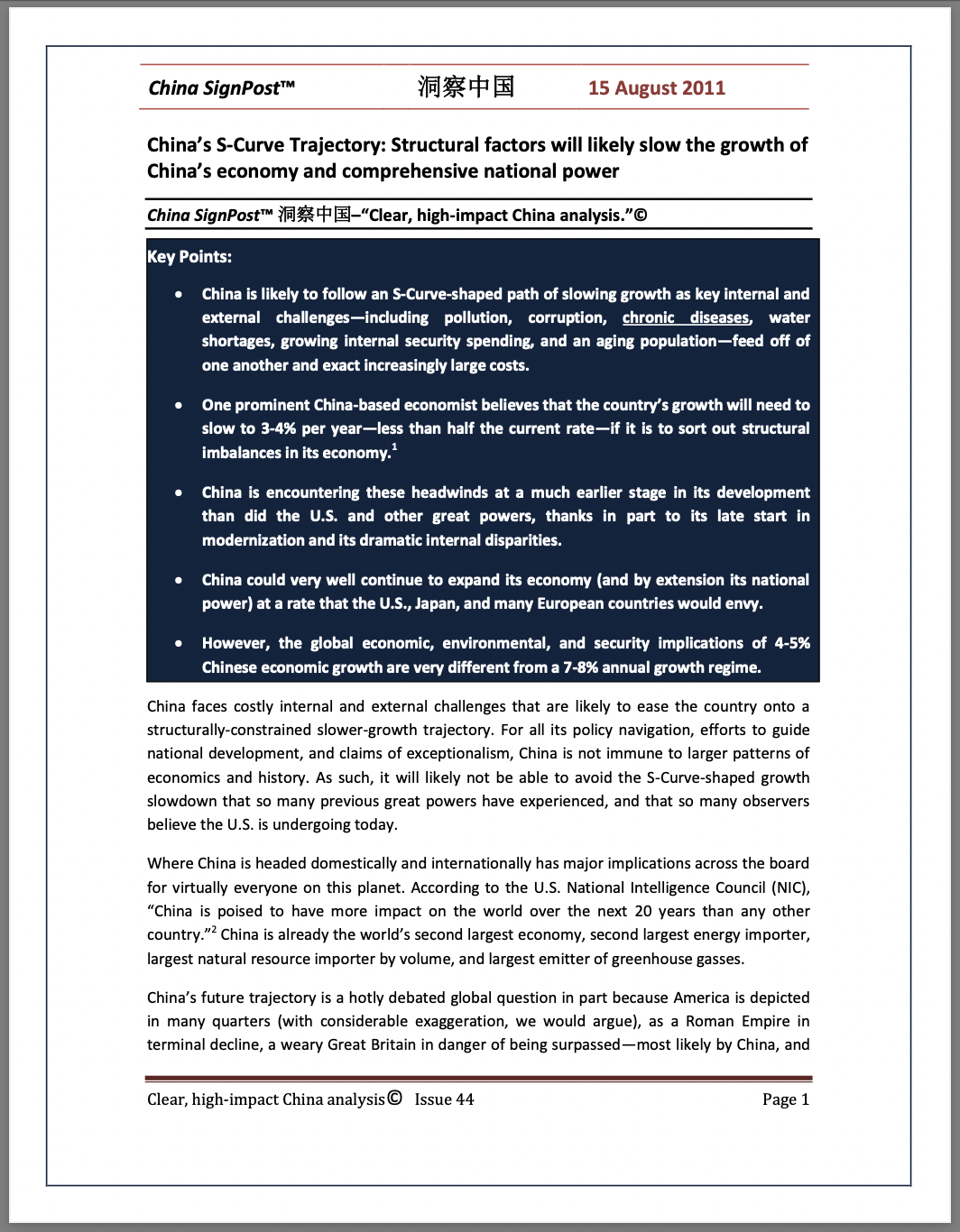Latest “Space Threat Fact Sheet” & Annex from Headquarters Space Force Intelligence
Important, impactful insights! This vital authoritative report and accompanying annex show just how dramatically and systematically China has built up its space and counterspace assets, and just how aggressively Russia has developed and postured its own. Of fundamental concern are the sheer number of satellites China now has in orbit, particularly for ISR, as part of its systematically building out a comprehensive, capable reconnaissance-strike complex. As a sign of the sheer rapidity of China’s ramp-up, between the suspense dates for the 29 April 2024 Space Threat Fact Sheet and 16 July 2024 Space Threat Fact Sheet, China added 20 ISR satellites in orbit. Between the suspense dates for the 16 July 2024 Fact Sheet and the current 21 February 2025 Space Threat Fact Sheet, China added another 20 ISR satellites in orbit!
While America and its allies have capable countermeasures of their own, it is no longer credible to claim that Beijing may lack essential architecture for targeting its long-range precision strike systems, which include the world’s most numerous conventional ballistic and cruise missiles. Other important revelations include details on China’s manifold ASAT systems, particularly the projection that by the mid-to-late 2020s China may field ground-based lasers sufficiently powerful to damage satellite structures.
The report documents extremely aggressive Russian counterspace systems that fly in the face of Moscow’s (and Beijing’s) two-faced arms control pronouncements. Of greatest concern is a new satellite designed to orbit a nuclear weapon for ASAT purposes. The use of such an indiscriminate Sword of Damocles would imperil satellites of all nations and entities, on which the world has come to rely for the most basic societal functions. Putin must never be permitted to hold the world’s vital interests at risk in such a way.
- Space Threat Fact Sheet, Version 7 (Washington, DC: Headquarters Space Force Intelligence, 21 February 2025).
- Space Threat Fact Sheet Annex (Washington, DC: Headquarters Space Force Intelligence, 21 February 2025).
CLICK HERE TO DOWNLOAD CACHED PDFS OF THE FACT SHEET & ANNEX.
Space Threat Fact Sheet, Version 7 (Washington, DC: Headquarters Space Force Intelligence, 21 February 2025).
[Approved for public release. No restriction on releasability.]
SPACE THREAT FACT SHEET
HEADQUARTERS SPACE FORCE INTELLIGENCE
The access to and use of space is of vital national interest. Intensifying strategic competition presents a serious threat to U.S. national security interests in, from, and to space. China and Russia seek to position themselves as leading space powers while undermining U.S. global leadership. Both countries are developing new space systems to enhance military effectiveness and end any reliance on U.S. space systems. China and Russia are also testing and fielding sophisticated counterspace capabilities with the intent to disrupt and degrade the U.S. space-enabled advantage.
CHINA’s rapidly growing space program is a source of national pride and key to President Xi’s “China Dream” to establish a powerful and prosperous nation. Beijing expects space to play an important role in future conflicts by enabling long-range precision strikes and by denying other militaries the use of space-based information systems.
In 2015, China officially designated space as a new domain of warfare and organized its military space capabilities under the newly established Strategic Support Force (SSF). In April 2024, military space was re-aligned under the Central Military Commission as the Aerospace Force following the dissolution of the SSF.
- In 2024, China conducted 68 total space launches of which 66 were successful, placing 260 payloads into orbit. 26% of these (67) were intelligence, surveillance, and reconnaissance (ISR) capable satellites.
- Since the end of 2015, China’s on-orbit presence has grown by approximately 620% (+875 satellites). As of December 2024, China had more than 1060 satellites in orbit.
- The PLA benefits from 510+ ISR-capable satellites with optical, multispectral, radar, and radio frequency sensors, increasing its ability to detect U.S. aircraft carriers, expeditionary forces, and air wings.
- In December 2024, China launched the TJS-12 remote sensing satellite into geosynchronous Earth orbit (GEO). The satellite could allow China to persistently monitor U.S. and allied forces in the Pacific region.
- China has launched 72 G60 communications satellites to low Earth orbit (LEO) as part of a planned 648 satellites by the end of 2025 and 14,000 by 2030 in order to compete with Western commercial proliferated LEO (pLEO) constellations. Another Chinese company, the China Satellite Network Group, launched 10 communications satellites in 2024 which were the first of a planned pLEO constellation of 13,000.
- China’s improving space-based capabilities combine with the PLA’s growing arsenal of long-range precision weapons to enable long-range precision strikes against U.S. and allied forces.
- China has launched three reusable spaceplanes. The first was in orbit two days, the second over nine months, and the third nearly nine months. All three released unidentified objects.
- China utilizes at least 10 satellites to conduct on-orbit space situational awareness (SSA). These autonomous observation satellites in LEO have mitigated China’s lack of global ground-based SSA sensors.
- China has made significant strides in developing re-usable space launch vehicles, to include a successful 12km high vertical takeoff and landing test last year. This is a key technology for meeting China’s pLEO plans.
Intelligence suggests the PLA likely sees counterspace operations as a means to deter and counter U.S. military intervention in a regional conflict. Moreover, PLA academics stress the necessity of “destroying, damaging, and interfering with the enemy’s reconnaissance…and communications satellites” to “blind and deafen the enemy.”
- In 2007, China destroyed one of its defunct weather satellites in LEO with a direct-ascent antisatellite (DA-ASAT) missile, creating more than 2,700 pieces of trackable debris that remain in orbit. Most of this debris will continue orbiting the Earth for decades. That missile evolved into an operational ground-based system intended to target LEO satellites. The PLA actively trains on this system today.
- Intelligence suggests China also likely intends to field ASAT weapons capable of destroying satellites up to GEO at 36,000 km. In 2013, China launched a ballistic object which peaked at 30,000 km, suggesting it may already have a basic ASAT capability against higher orbits.
- China is developing satellite “inspection and repair” systems which could also function as weapons and has already launched multiple satellites to experiment with orbital maintenance and space debris clean-up. In January 2022, the Shijian-21 satellite moved a derelict BeiDou navigation satellite to a graveyard orbit above GEO. This technology could be used in future systems to grapple other satellites.
- Multiple Chinese SJ-series and TJS-series experimental satellites have been observed conducting unusual, large, and rapid maneuvers in GEO; tactics which could have a number of different military applications.
- The PLA has multiple ground-based laser weapons able to disrupt, degrade, or damage satellite sensors. By the mid-to-late 2020s, they could have higher-power systems able to damage satellite structures.
- PLA military exercises regularly incorporate jammers against space-based communications, radars, and navigation systems like GPS. Intelligence suggests the PLA may be developing jammers to target SATCOM over a range of frequencies, including U.S. military protected extremely-high-frequency (EHF) systems.
RUSSIA has one of the world’s largest space programs and remains a capable space actor. Its experience and pedigree are unmatched outside the U.S. and are enduring sources of pride for the Russian people.
Russia views space as a warfighting domain and believes space supremacy will be a decisive factor in future conflicts. To that end, the military’s space troops were integrated into the Aerospace Forces in 2015, in part to better integrate space-based capabilities into larger operations. However, Russian space technology has declined amid funding shortfalls, international isolation, and broader societal problems.
- Russia conducted only 17 launches in 2024 and remained largely absent from the international market, placing only five foreign payloads in orbit.
- Russia retains expertise in rocket engines and space launch; however, its launch activity increasingly lags the U.S. and China. Russia aspires for its newest cosmodrome to reduce dependencies on Baikonur.
- Russia operates some of the world’s most capable ISR satellites for optical imagery, SIGINT, and missile warning, but Moscow is increasingly relying on civil and commercial satellites due to technological and financial setbacks. For example, Russia’s Wagner Group is known to have purchased imagery from Chinese company Spacety to support combat operations in Ukraine.
Even as Moscow backs space arms control negotiations, Russia is researching, developing, testing, and deploying counterspace systems to take advantage of a perceived vulnerability of U.S. military dependence on space.
- In November 2021, Russia tested its Nudol DA-ASAT missile against a defunct Soviet satellite in LEO, creating 1,500 pieces of trackable debris and an assessed tens-of-thousands of non-trackable objects. This act endangered spacecraft of all nations in LEO, including astronauts and cosmonauts on the International Space Station and taikonauts on China’s Tiangong Space Station.
- A large missile first observed on a MiG-31 aircraft at a test site in 2018 may be related to an air-launched ASAT missile named Burevestnik which will be “capable of destroying targets in near-space.”
- Russia has deployed several orbital ASAT prototypes in LEO. In 2019, one followed a U.S. satellite. Another ejected an object near a Russian satellite while testing a space-based ASAT weapon. Most recently, Russia launched a likely counterspace satellite in May 2024, again in the same orbit as a U.S. satellite. Moscow may also be developing ASAT systems for use in other orbits under the guise of orbital servicing assets.
- Russia deployed Peresvet laser weapons to five strategic missile divisions starting in 2018. The system can mask missile deployments by blinding satellite sensors. Russia may deploy more powerful lasers by 2030.
- Russia is also developing a very concerning ASAT capability using a new satellite designed to carry a nuclear weapon. Such a capability could pose a threat to all satellites operated by countries and companies around the globe, as well as to the vital space-enabled communications, scientific, meteorological, agricultural, commercial, and national security services which the world depends on.
- At the onset of the Ukraine invasion in February 2022, Russia launched a cyber-attack against a commercial SATCOM provider. Later that year, a Russian official at the United Nations (UN) twice said “quasi-civilian” commercial satellites used for military purposes “may become a legitimate target for retaliation.” In June 2024, the International Telecommunication Union characterized Russia’s continued interference with GPS and satellite communications across Europe as “extremely worrisome and unacceptable.”
China is the PACING CHALLENGE and is rapidly improving its space capabilities to TRACK & TARGET U.S. military forces. China & Russia are pursuing a wide range of counterspace capabilities to DISRUPT & DEGRADE U.S. space capabilities.
***
Space Threat Fact Sheet Annex (Washington, DC: Headquarters Space Force Intelligence, 21 February 2025).
[Approved for public release. No restriction on releasability.]
SPACE THREAT FACT SHEET ANNEX
HEADQUARTERS SPACE FORCE INTELLIGENCE
CHINA
ISR Satellites
In December 2023, China launched the Yaogan-41 remote sensing satellite into geosynchronous Earth orbit (GEO). The satellite could allow China to persistently monitor U.S. and allied forces in the region.
Beidou
China’s version of GPS, BeiDou, provides global, 24-hour, all-weather, high-accuracy positioning, navigation, and timing services. The PLA uses BeiDou to enable force movements and precision attack.
Hypersonic Glide Vehicle
In July 2021, China conducted the world’s first fractional orbital launch of an ICBM with a hypersonic glide vehicle. This marked the greatest distance flown (~40,000 km) and longest flight time (100+ minutes) of any PLA-developed land attack weapon system to date.
RUSSIA
Electronic Warfare
Russia views electronic warfare as essential to gaining and maintaining information superiority and has fielded a wide range of ground-based EW systems to counter U.S. GPS, communications, and radars.
Nuclear Detonation in Space
An accidental or purposeful nuclear detonation in outer space could cause devastating consequences for the world and for the global economy. Such a detonation could affect all countries’ national security and commercial satellites and infrastructure, including all States’ ability to use space as a driver for development. Every UN Sustainable Development Goal includes an element that relies on satellites, and all of those satellites would be at risk of destruction.
People worldwide rely on space-based services daily for communications, financial, weather, energy, transportation, agriculture, emergency and disaster response, and national security services. Rapid and sudden loss or degradation of thousands of satellites operated by countries and companies around the world could have cascading, adverse global effects including:
- The life of astronauts in space would be at risk.
- Communications, including broadband TV, data, and cellular services will be less reliable or unavailable due to significant and abrupt loss of satellite bandwidth.
- Civil unrest could erupt due to panic and fear regarding the disruption of basic goods and services, including financial services.
- Delayed emergency and law enforcement services due to response systems that are currently heavily reliant on space-enabled services.
- Delayed/Decline of sea, ground, and air travel and goods shipment, due to reduced safety and efficiency.
- Possible interruptions of energy services worldwide.
- Diminished ability to provide accurate weather forecasting and advanced warning for major events like hurricanes, typhoons, and wildfires, and degraded climate change monitoring.
- Agriculture impacts limiting the efficiency of any planting and harvest which would reduce crop input and yields.
- International trade will fall precipitously without space-enabled services due to reduced efficiency of systems, supply chain disruptions, and reduced confidence.
- Commercial space firms will lose almost all profitability, losing communications with their assets that will face exponentially increased risk for collisions with space debris.
Based on commercially available information, China was able to conduct a series of proximity operations in 2024 involving three Shiyan-24C experimental satellites (SY-24C 01/02/03) and two Chinese experimental space objects, the Shijian-6 05A/B (SJ-6 05A/B). The three SY-24C satellites were initially inserted into an orbit co-planar with the SJ-6 05A/B pair at time of launch in December 2023. Beginning in the middle of March 2024 and ending in late April 2024, the five-satellite cluster performed a multitude of proximity operations with under 1 km separation, including two simultaneous proximity events at the same time. In September 2024, the SY-24C 02 and SY-24C 03 performed three separate approaches within 1 km, two of which were multi-day events. In early December, during another multi-day sequence, SY-24C 03 and SJ6 5A were separated by 10’s of meters on five occasions with associated relative velocities less than 10 cm/s. After this event all five satellites re-established a maneuver pattern to maintain separation of more than 100 km; similar to holding patterns between proxops activity over the last year. These operations demonstrate that, when necessary, the Chinese can efficiently and consistently execute close proximity operations in low Earth orbit which have a variety of military applications, to include intelligence collection and co-orbital antisatellite operations.





